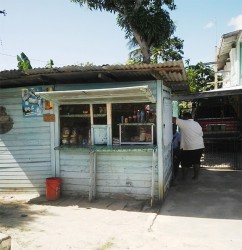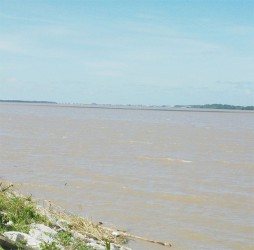Story and photos by Dacia Whaul
Drawn by the hope of a better life, approximately fifty-four farmers and their immediate families migrated from across the three counties of Guyana, to the Belle Vue Pilot Scheme, a co-operative venture, which is now known as Belle Vue Village. Belle Vue, when translated from the French means, ‘pretty view.’
This little breezy West Bank Demerara community has a population of 400 residents and has been in existence for over fifty years. It is located between Stanleytown village to the north, Goed Intent to the south, a sugarcane field to the west and the Demerara River to the east, of which the newly constructed seawall provides a panoramic view. It is divided into the pilot scheme – the area of the original co-operative project, and the squatting area.
“I came at one year ten months,” said Chatterpaul Budhiprasad, a son of one of the fifty-four cane farmers who migrated to Belle Vue. Budhiprasad described a happy community, when he spoke of the Belle Vue he grew up in. “In those days we had a pavillon for children to play cricket” Budhiprasad said. “It was just the housing scheme back then, [and] weekends we children use to play all kinds of games, like football and ketcha.” Budhiprassad said “in those days everybody use to live as one.”
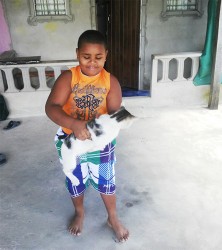
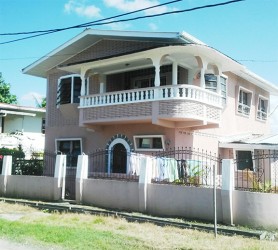
“We use to fetch water from the trench for we parents,” said Sandra, “and in the same trench we use to swim.” According to her all the village children would congregate at the trench which separates the village from the West Bank Public Road. She said her family reared cows, “so one of my chores was to feed the cows grass.” She continued with a laugh, “then we had to feed the fowls, clean they pen, water the plants… and we had to do all that in time for 8.30 school you know.” Sandra’s attention is nowadays fully taken up with raising her grandson Nicholas, and looking after his animated pet cat, Moses.
The homes in the pilot scheme were simple two-storey buildings with two bedrooms, a living room, kitchen and an outside bathroom and toilet facility. “The Bookers start this community,” Budhiprasad told Sunday Stabroek. According to him cane farmers were given 15 acres of farmland on which to cultivate sugar, as well as the house, which was eventually sold to them for the price of $250. The agreement Budhiprasad said, was for the farmers to pay down on the house every time they reaped sugarcane, until it was paid up in full.
He also said that the now developing “new scheme” is a consequence of the descendants of the first set of settlers branching off to start their own families.
Paul Jaisingh, the son of one of the original settlers, told Sunday Stabroek that his parents moved to Belle Vue with him and his five siblings; he was ten-years-old at the time. He said “living here was like a big family.” He described it as being very bushy, and that “the public road was like a back dam road.” He said one bus used to provide transportation to Belle Vue, and if you missed the last at 11pm, you would have had to “sleep where night catch you.”
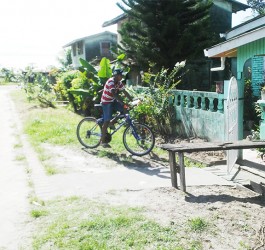
His fondest memories were of huddling around the village elders with other village children, listening to ‘jumbie’ stories in the moonlight. He said some of his favourite stories were moongazer, ole higue and bacoo. “When them old men use to talk about jumbie, we use to get frighten when time to go home,” he said, bursting into a loud laughter; “sometimes some children use to sleep by me if they really ain’t want take the chance to go home.”
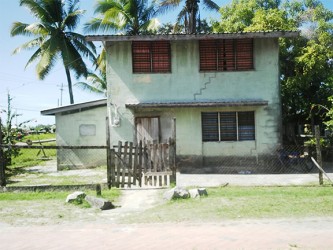
He lamented the transformation the village had gone through. Today, only two of the original farmers are still alive, Jaisingh said; the man lives in Canada, while the woman lives in Suriname. Both had recently returned to the village, the woman to sell her property and the man to visit relatives still residing there. Jaisingh also admitted to selling his parents’ home and is preparing to move to the Linden-Soesdyke Highway with relatives, saying “the place is not like it use to be,” referring to the co-operative structure Belle Vue started with. “They [new villagers] living for themselves, nothing like when everybody use to take turns visiting the other exchanging food and having a nice conversation.”
Nevertheless, he said he wanted the world to know that Belle Vue is not a bad place and like any other village, it has its ups and downs. “Not much stealing here,” he said; “we could sleep with our doors and windows open and wake up with everything intact.” In addition, villagers welcomed virtual strangers in their homes, and would even allow them to stay overnight if they had been left stranded.
The village has no learning, medical or functioning recreational facilitates. However, village children attend schools in neighbouring villages, such as Goed Intent Nursery, La Retraite primary and Patentia Secondary Schools. For medical attention, villagers go to the Goed Intent Health Centre and in cases of serious illness they visit the West Demerara Regional Hospital. If there is need for police assistance, residents can call the Wales Police Station.
While the village is home to people of various faiths, there is only has one place of worship, a Christian church. Two small grocery shops cater to villagers’ basic food needs. Bulk shopping is done at the Wales or Vreed-
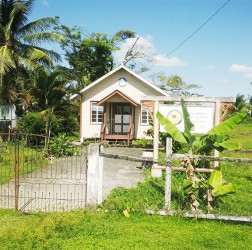
en-Hoop markets. Residents also enjoy potable water and electricity, but are still awaiting a landline telephone service.
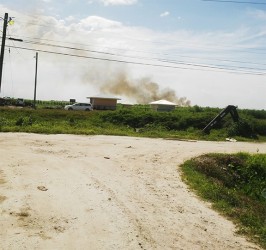
Some of their complaints were about non-functioning street lights that were erected in 2011, flooding when there is heavy rainfall and a lack of job opportunities for the many youths who either lime on the streets or cut cane, the very trade that brought their forebears to Belle Vue. What once represented a hope of prosperity, now epitomizes limited opportunity and frustration for many, especially the least educated members of the community.
Additionally, youths have no place entertain themselves, many of whom have called for the urgent renovation of the community playfield that is in a state of disrepair. Many villagers confirmed what Jaisingh said about crime not being an issue, although some complained about the increase in the number of young males loitering, drinking and smoking illicit drugs. “They don’t have jobs for these young people,” said one villager.
Belle Vue began as mostly an Indian settlement, although now all races are represented there. As Deonarine puts it “this is a quiet and nice place to live,” where there is racial harmony.
